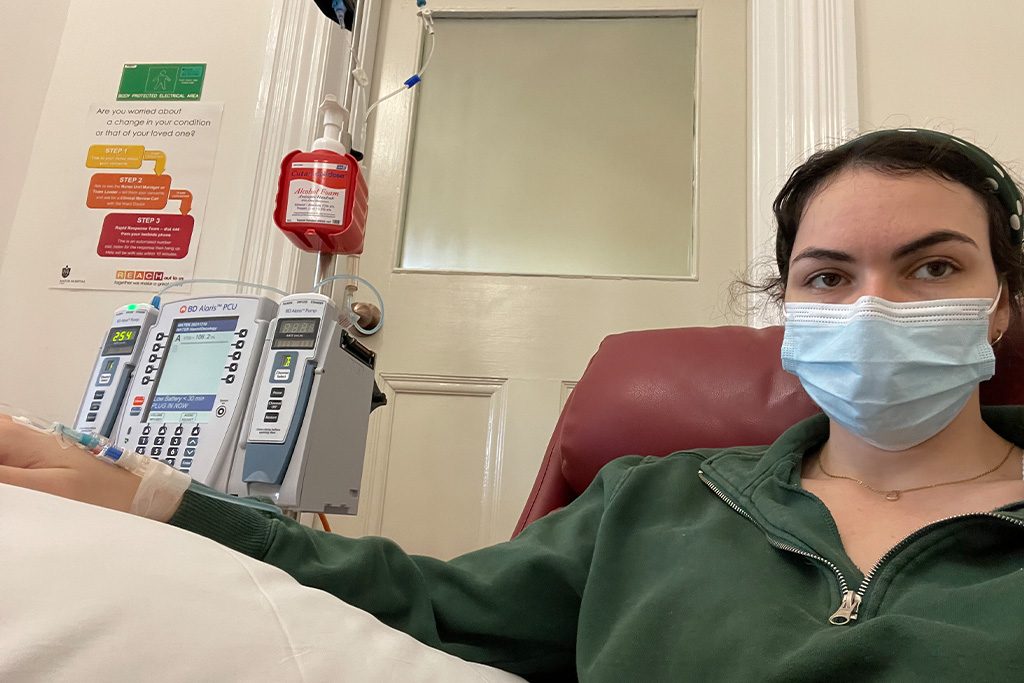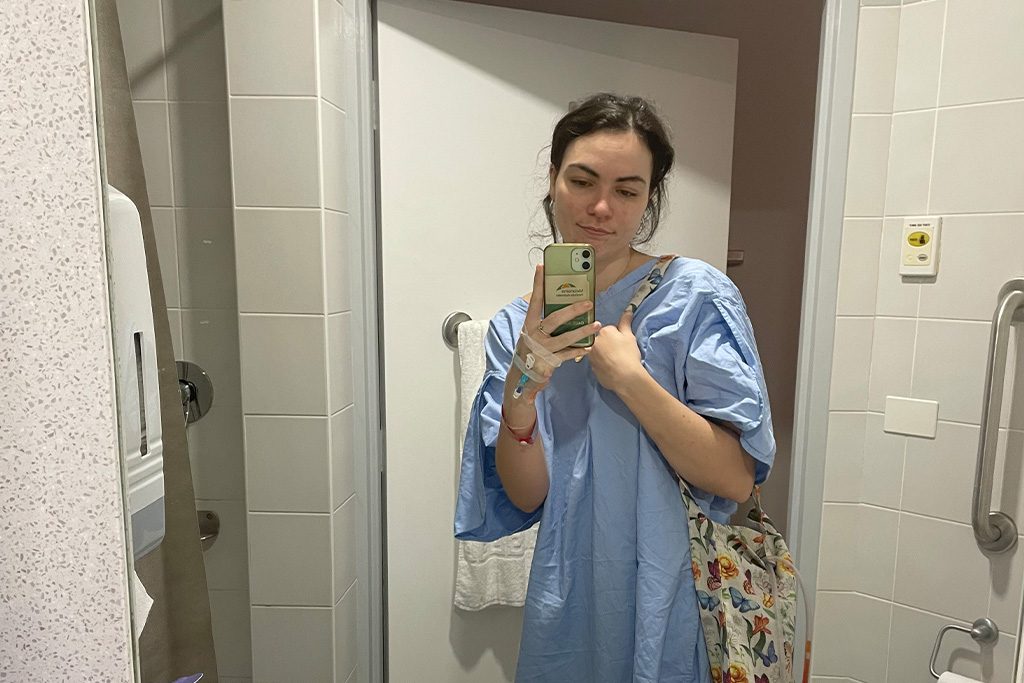Melanoma Is The Most Common Cancer For Young Australians. That’s Cooked.
Summer is officially here.
It’s time to flock to the beach, sip on Aperol spritz, and pretend we are somewhere in Sicily — The White Lotus perhaps?
For most of us, though, Sicily remains a distant dream: we’ll be in Australia, home to the highest melanoma rates in the world, a cancer that most commonly affects young Australians in their twenties. Enter, Samantha.
Samantha’s Experience With Melanoma
“I was that person who was covered up at the beach with towels and no one asked me to put sunscreen on their body because they knew they would never get a tan [with my rigorous application],” Samantha Marshall tells Junkee.

Supplied by Samantha Marshall
Samantha is a 25-year-old lawyer and elite athlete, living in Erskineville. She was just 17 when she discovered a mole on her leg, a common place for young women to find skin cancers, she tells me.
Samantha’s mole had grown proportionate to her body, so she didn’t think too much of it at the time. Still, when she went to get her skin checked, the doctor thought it best to remove it. When the pathologist results came back, it was with good news: it wasn’t melanoma.
“Then in February [of] this year, I noticed I had a lump, which ended up being quite large,” she exhales.

Supplied by Samantha Marshall
The new lump was about five-by-three or four centimetres, as Samantha tells it. She did all the tests, scans and biopsies, once again.
“They diagnosed me with Stage IIIB melanoma, which is not the most advanced stage, but it’s getting there,” she says.
“And it looks like it was probably the melanoma I had removed when I was 17 … going back and looking at the pathology again with the benefit of hindsight and more information, [that] probably was the cause.”
What Is Melanoma?
Melanoma Institute Australia or MIA explains how melanoma develops in the skin’s pigment cells, called melanocytes. Melanocytes produce melanin to help protect the skin from ultraviolet radiation from the sun.
Every time skin is exposed to UV without protection, the structure of these skin cells can change.
“It is a whole lot of pain and I wouldn’t wish that upon anyone.”
If melanocytes cluster in groups, they form a mole. They become melanoma when abnormal melanocytes grow in an uncontrolled way. Once that happens, melanoma can spread via the blood and lymphatic system to vital organs.
“Most skin cancers that are detected early, almost all of them can be pretty effectively treated by just cutting them out,” Samantha says.
“But at the same time it’s far better to not have them in the first place. Because if you do end up being one of the unlucky few that have … cancer that wasn’t [able to be] treated just by removing it — it is a whole lot of pain and I wouldn’t wish that upon anyone.”
So How Likely Are You To Get Skin Cancer?
Our skin records all the UV exposure it’s ever received, like a memory bank.
All those moments of unintentional (or intentional) sunburn, summer glows and tanning add up, and increases your long-term risk of skin cancer.
Less than 5 percent of skin cancers are from an inherited gene, which means 95 percent of melanoma cases are caused by overexposure to UV radiation from the sun.
It’s estimated that two in three Aussies will be diagnosed with skin cancer by the age of 70. And it’s expected that 16,800 Australians will be diagnosed with melanoma this year.
“There’s always a cultural focus on tanning in this country, which is really at odds with how most of the population experience the sun,” Samantha says.
Tracking at more than 8.4 million views worldwide, TikTok’s popular #sunburnchallenge hashtag is an ominous example of this disconnect. The trend encourages users to post videos of their most painful sunburns and awkward tan-lines — which feels so far removed from the public health campaigns we grew up with, like Healthy Harold and those “There’s nothing healthy about a tan” ads.
‘Tanning. That’s Cooked.’ is the new campaign led by MIA, which attempts to squash suntanning habits this summer among young people.
View this post on Instagram
MIA has joined forces with TikTok Australia, which says it will permanently ban the hashtag and issue pop-up warnings on tanning videos shared on the platform.
As for Samantha, after a pretty hectic operation to remove her lymph nodes — along with multiple rounds of different immunotherapy drug trials — she is currently six-months cancer free.
Of course, Samantha will still have her regular skin checks and PET scans and, most importantly, remains vigilant about protecting her skin.
Her plea to young people today? For all of us to understand that suntanning is dangerous, and can pose long-term consequences to our health; not unlike smoking.
“[Tanning] is like being a non-smoker with lung cancer, watching someone smoking in front of you…it’s almost offensive.
And skin cancer is not an older person thing. It’s not something you deal with down the track. It’s the youth cancer and there’s a lot that we can do, so there’s a lot we should do.”


